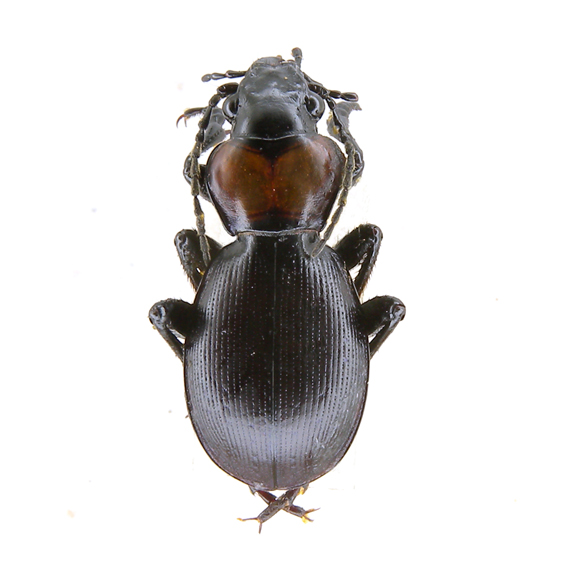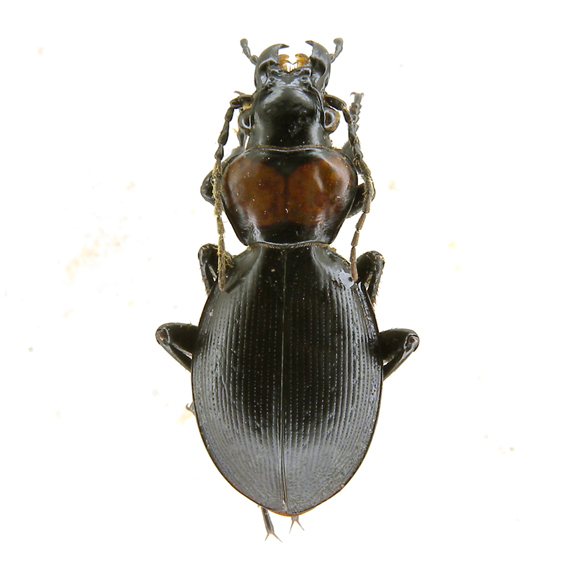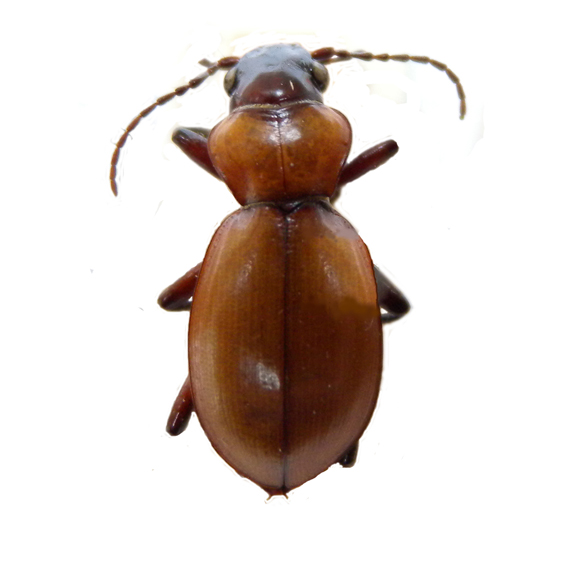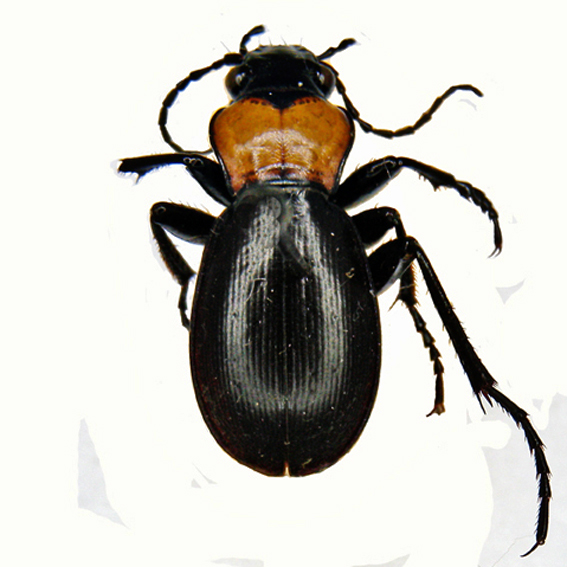Calosoma (Orinodromus) deckeni (Gerstaeker, 1867)
Carabus Deckeni Gerstaeker, 1867: 10 (type locality: Kilimandjaro); lectotype ♀ in Museum für Naturkunde, Berlin (Jeannel, 1940: 148)
Trachycarabus Deckeni Géhin, 1885: 53
Orinodromus Deckeni var nigripennis Kolbe, 1895: 64 (described from Kilimandscharo); type material 1 ♂ in Museum für Naturkunde, Berlin (Jeannel, 1940: 148)
Orinodromus Gerstaekeri Kolbe, 1895: 64 (described from Kilimandscharo); type material 1 ♂ in Museum für Naturkunde, Berlin (Jeannel, 1940: 148)
Orinodromus Gerstaekeri subsp. alluaudi Kolbe, 1905: 593 note 62 (described from Kilima-Ndjaro); type material in Museum für Naturkunde, Berlin (Jeannel, 1940: 148)
Orinodromus Gerstaekeri subsp. Alluaudae Alluaud, 1908: 24 (described from Kilimandjaro, above Kilema 2800m.) type material in Muséum National d'Histoire Naturelle, Paris (Jeannel, 1940: 148)
Calosoma (Carabomorphus) deckeni Breuning, 1928: 137
Carabomorphus (Orinodromus) deckeni Lapouge, 1932: 397
Orinodromus Deckeni Jeannel, 1940: 148
Length 12-18 mm. Three species, C. deckeni, C. glaciale and C. volkensi, are found on Mount Kilimanjaro, divided by altitudinal belts and exposure of the slopes. All have the rear lobes of pronotum, small but well developed, and provided with one bristle. Basing on these characteristics, Jeannel (1940) distinguished these species, placing them in the subgenus Orinodromus s. str., together with C. neumanni another species found in mountains not too far away from Mount Kilimanjaro.
C. deckeni has a pronotum of reddish yellow colour, elytra with striae just visible or smooth, of black to brown to yellow colour. In the larger specimens, the sculpture may be deeper and the primary intervals may be slightly segmented in tubercles. The penis has a ligule with an unmistakable apex bifurcate.
The variations in the color of the pronotum and of the elytra justified the description of varieties, subspecies, or distinct species. Jeannel, recognizing that the individuals, characterized by these variations, are mixed in the various colonies of the various altitudes, has dealt with all of them as simple individual variants.
C. deckeni is located in the south eastern slopes of Kilimanjaro, from Bismarck Hut (now Mandara Hut) up to the base of the cone of Mawenzi, (between 2500 and 3200 m).
Examined specimens
Tanzania. Kilimanjaro (NMB); Kilimanjaro, Bismark (Mandara) Hut, 2600-2800 (EM, MNHN, RMCA, SB), Kilimanjaro, 8900 ft, South side near Bismark (Mandara) Hut (sub Orinodromus Deckeni nigripennis Kolbe, RMCA)
Notes: Wingless. Live at the upper limit of the forest, on alpine meadows, at the foot of tufts of grass. Catches are reported from January to April, in June and in October (Basilewsky, 1962: 69).
The species is named after Baron Karl Klaus (Carl Claus) von der Decken (1833 - 1865) a German explorer of eastern Africa and the first European to attempt to climb Mount Kilimanjaro in two expeditions in 1861 and 1862.
 (Gerstaeker, 1867) Tanzania: (Afrique or. allemande), Kilimandjaro, versant Sud Est, Alluaud & Jeannel; prairies alpines, Bismarck Hugel, 2600-2800, Mars-Avril 1912 |
 (Gerstaeker, 1867) Tanzania: (Afrique or. allemande), Kilimandjaro, versant Sud Est, Alluaud & Jeannel; prairies alpines, Bismarck Hugel, 2600-2800, Mars-Avril 1912 |
 (Gerstaeker, 1867) Kilimandjaro, Kaien 1908 (coll. Naturhistorischen Museums Basel) |
 (Gerstaeker, 1867) Kilimanjaro, 8900 ft, 23.X.1948, G Salt South side near Bismark hut (sub deckeni nigripennis) (coll. Musée Royal de l'Afrique Central, Tervuren) |